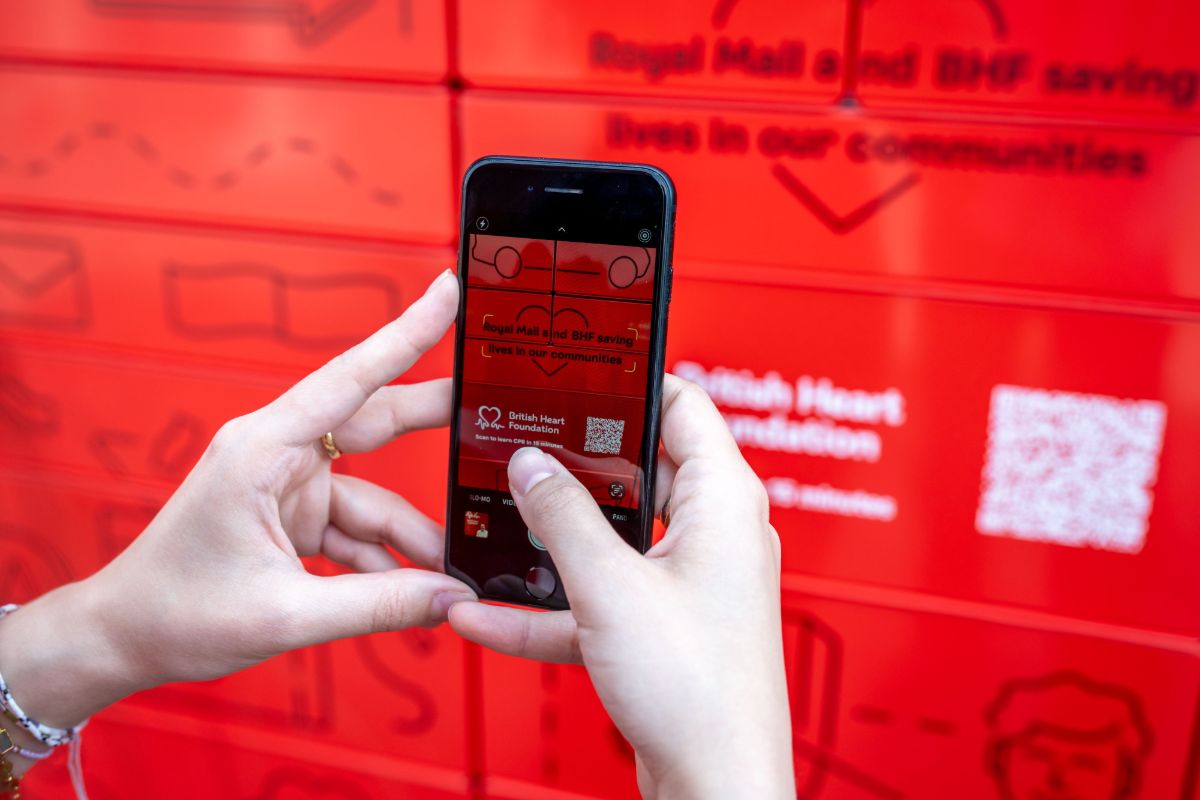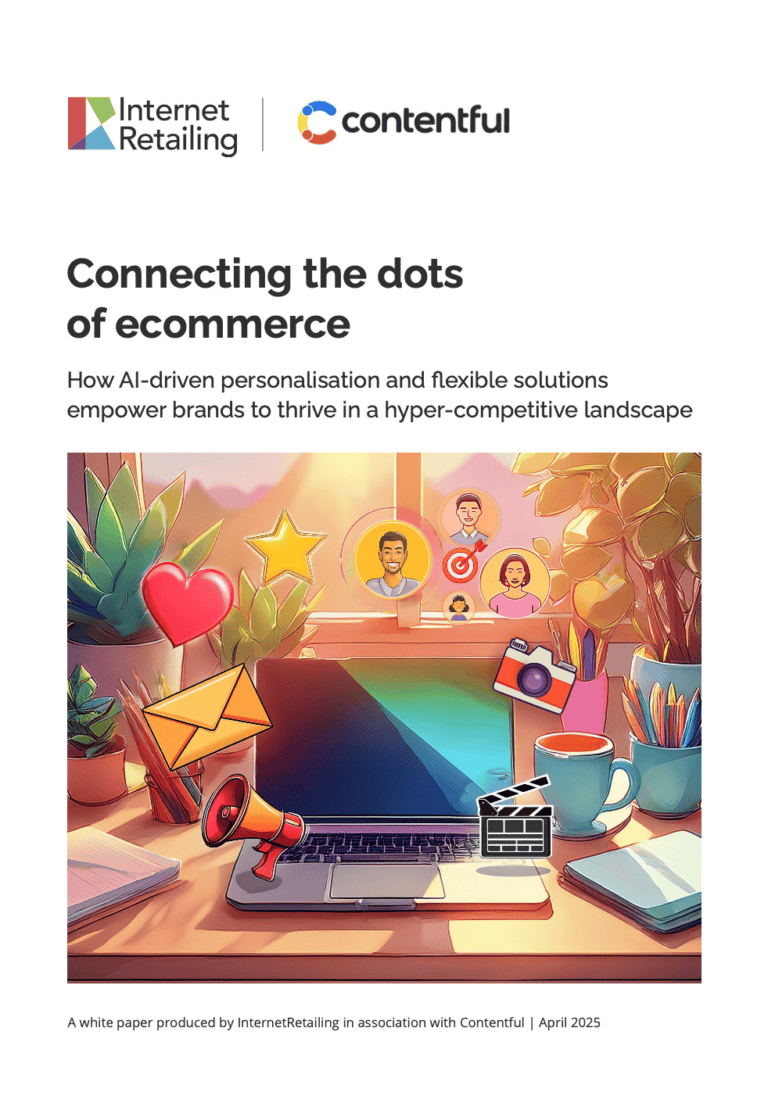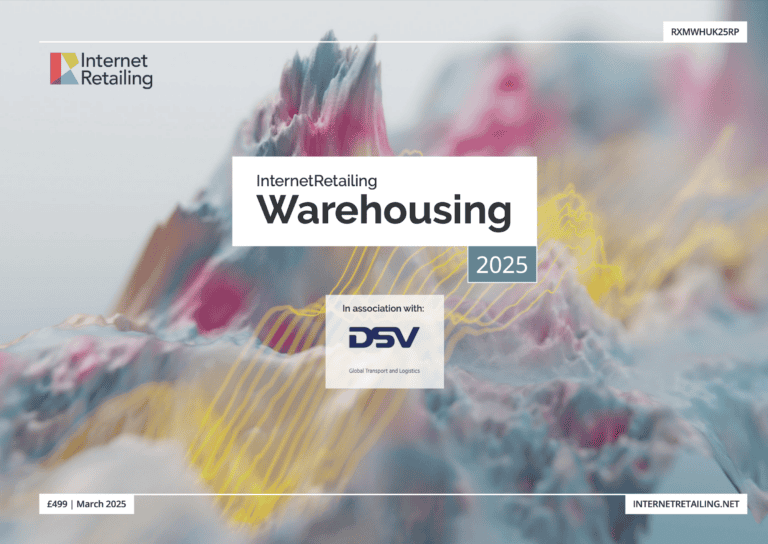Shoppers continued to do more of their shopping online in March than before the pandemic, with 38.5% of UK retail sales via ecommerce, the latest figures from the British Retail Consortium suggest. Compared to last March – when the third national lockdown was still in place – online sales fell sharply (-29%) but were still well ahead pre-pandemic 2019 (+38.9%), according to today’s BRC-KPMG Retail Sales Monitor for March 2022. Across sales channels, total retail sales for the month were 3.1% ahead of last year, but fell by 0.4% on a a like-for-like basis that strips out the effect of store – and business – openings and closures.
Last year, non-essential shops were closed until April 12 in England as part of the third national Covid-19 lockdown.
Meanwhile, figures from Barclaycard suggest that spending on essential items grew by 18.1% during the month – compared to the same month in pre-pandemic 2019 – including on fuel and supermarket shopping (+16.9%) as prices rose. Non-essential spending also rose by 17.5% – despite inflation and cost of living concerns, according to the company’s analysis of the debit and credit payments that it processes. But in Barclaycard’s consumer survey, nine in 10 said they were concerned about the effect of rising household bills on their personal finances and 35% are now stocking up on everyday items. “Many sectors saw strong growth in March compared to the same period in 2019, as sunnier weather encouraged Brits to socialise at pubs and bars, book staycations and update their wardrobes for spring and summer,” says José Carvalho, head of consumer products at Barclaycard.
“However, rising fuel prices and household bills are clearly starting to influence consumer behaviour, with many Brits changing their travel and shopping habits to save money. While this may dampen growth in the months ahead, we shouldn’t overlook the expected heatwave later in April, and the fast-approaching Easter holidays, both of which are likely to boost non-essential spending.”
How shoppers spent online
Online non-food sales fell by 29% in March, compared to the previous March, when they had grown by 67.7% in lockdown, according to the BRC/KPMG figures. That’s below the three-month decline of 27.3%. Ecommerce sales remain more than a third (+38.9%) higher than the same period in pre-pandemic 2019 – in line with the three month average (+38.8%).
Some 38.5% of UK retail sales took place online in March 2021. That’s down from 63% a year earlier, but 9.2 percentage points ahead of the 29.3% recorded in 2019.
Don Williams, retail partner at KPMG, says the figures suggest that online shopping has become a long-term habit, despite the full reopening of shops. “Online sales fell across all categories compared to March 2021, but penetration rates remain high confirming the ‘locked in step up’ in online purchasing. This continues to force retailers to focus on finding the most effective mix between physical and online retailing.”
Helen Dickinson, chief executive of the British Retail Consortium (BRC), says: “As consumer confidence continued to sink, March saw sales slow, and while spend remained above last year this likely reflects higher prices. Beauty and fashion items were popular last month, as consumers took to their town and city centres for some retail therapy in the run up to Mother’s Day. While it is promising to see experiential shopping back in fashion, much in-store retail has not recovered to its pre-pandemic level. Online sales also decreased compared to last year but remain well above 2019 levels due to investment by retailers in their digital offer.”
How shoppers spent in-store
A year on from the third UK lockdown, when non-essential shops were closed, in-store sales of non-food products grew by 92.9% in total and by 74.9% LFL in the three months to March. That’s ahead of the 12-month average growth of 69.9%. But compared to the same period in pre-pandemic 2019, in-store non-food sales fell by 18.3% in total and by 3.9% LFL.
How shoppers spent across channels
Shoppers spent 3.1% more on UK retail purchases in March than they did a year earlier – when retail sales had grown by 13.9%. Spending was below both the three-month (+6.9%) and the 12-month (+10.3%) average. Sales were also 5.4% ahead of the same month in pre-pandemic March 2019.
On a like-for-like basis – which strips out the effect of store – and business – openings and closures – retail sales fell by 0.4% from March 2021, when they had risen by 20.3% on the previous year. That’s below the three-month (+3.2%) and 12-month (+6.5%) averages.
In the three months to March, food sales fell both in total (-2.6%), and on a LFL basis (-3.1%). That’s below the 12 month average of 0.8%. In March alone, food sales fell on year-on-year.
Susan Barratt, chief executive of grocery analyst the IGD, says: “It is no surprise that shopper confidence continues to fall and is now lower than the previous low of December 2013 when the horsemeat scandal impacted the food industry. There was a brief peak in confidence when it looked like oil prices might come down, but with 50% of shoppers now expecting food prices to become much more expensive, this optimism was short-lived. These challenges affect shoppers in different ways, with household cutbacks seeing less affluent shoppers skipping meals to save money. This volatile time is set to continue as the reality of the energy price increase, as well as general inflation, hits home for shoppers.”
Non-food retail sales increased by 14.9% over the same period in total, and by 8.6% LFL. That’s below the 12 month total average of 18.3%.
Looking ahead
There are warnings that rising energy prices and the knock-on effect on the cost of living, both exacerbated by war in Ukraine, are likely to hit retail spending in the coming months.
“The rising cost of living and the ongoing war in Ukraine has shaken consumer confidence, with expectations of people’s personal finances over the next 12 months reaching depths not seen since the 2008 financial crisis,” says the BRC’s Dickinson. “Furthermore, households are yet to feel the full impact of the recent rise in energy prices and national insurance changes. There is also potential for further supply chain disruption, with China putting key manufacturing and port cities into lockdown. Ultimately, consumers face an enormous challenge this year, and this is likely to be reflected in retail spend in the future.”
KPMG’s Williams adds: “Sales growth in March rose at the slowest rate so far this year, suggesting clouds on the horizon as household budgets come under pressure from rising costs, and increasing tax burden and competition from holidays. There is concern on what this could mean for consumer confidence and the impact on discretionary spend. Additionally, retailers are facing their own battle with rising costs and inflation, and are walking a tightrope between absorbing rising costs themselves or passing these on to consumers, when competition for share of a shrinking wallet is increasingly fierce.
“The best retailers will continue to balance attention on areas that can yield cost and efficiency gains with a clear understanding of their customer and what they want to buy and how. The primary concern now is whether consumers will choose to reduce their physical and virtual shopping to counteract rising household bills and reduced household income.”










